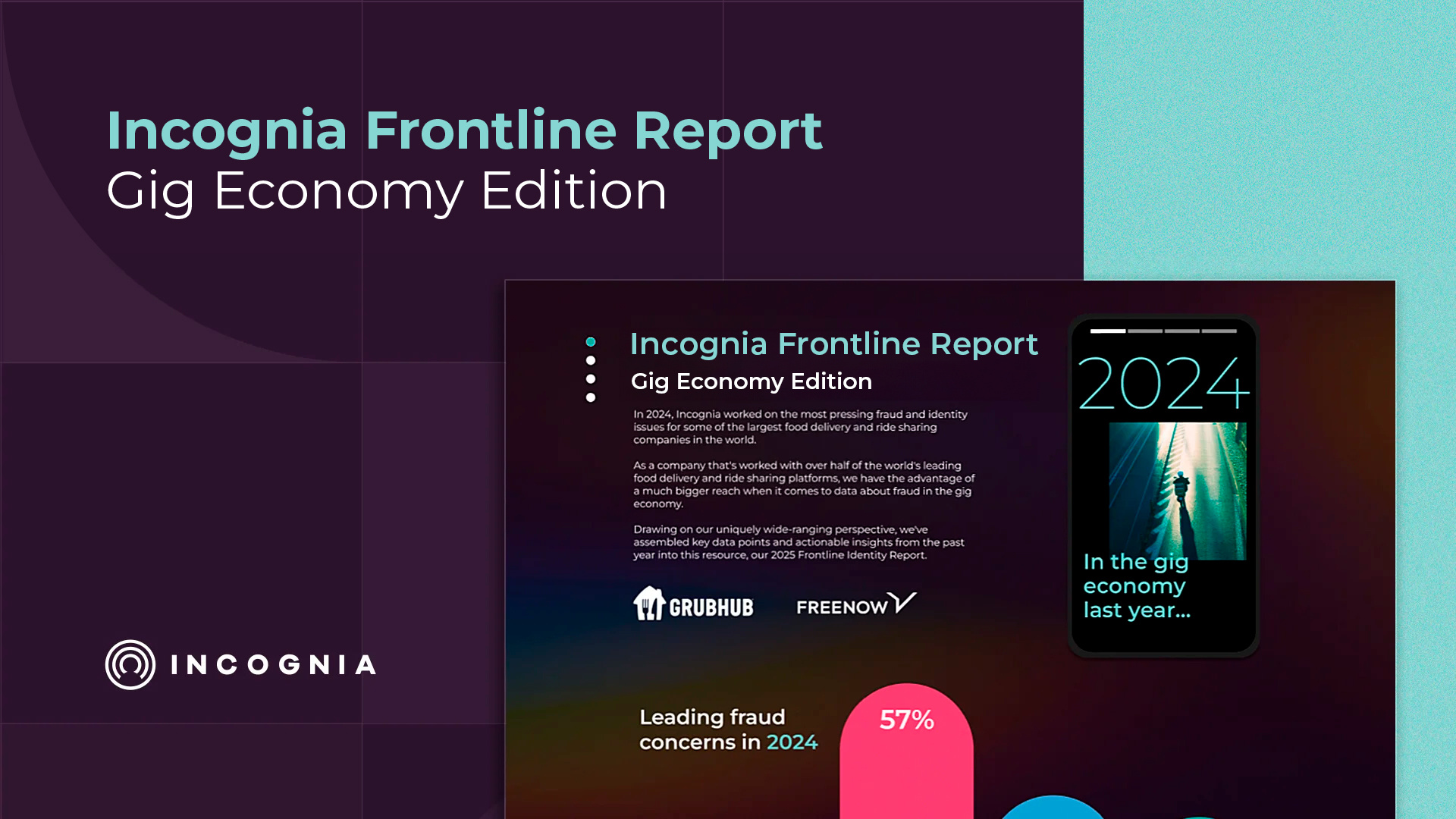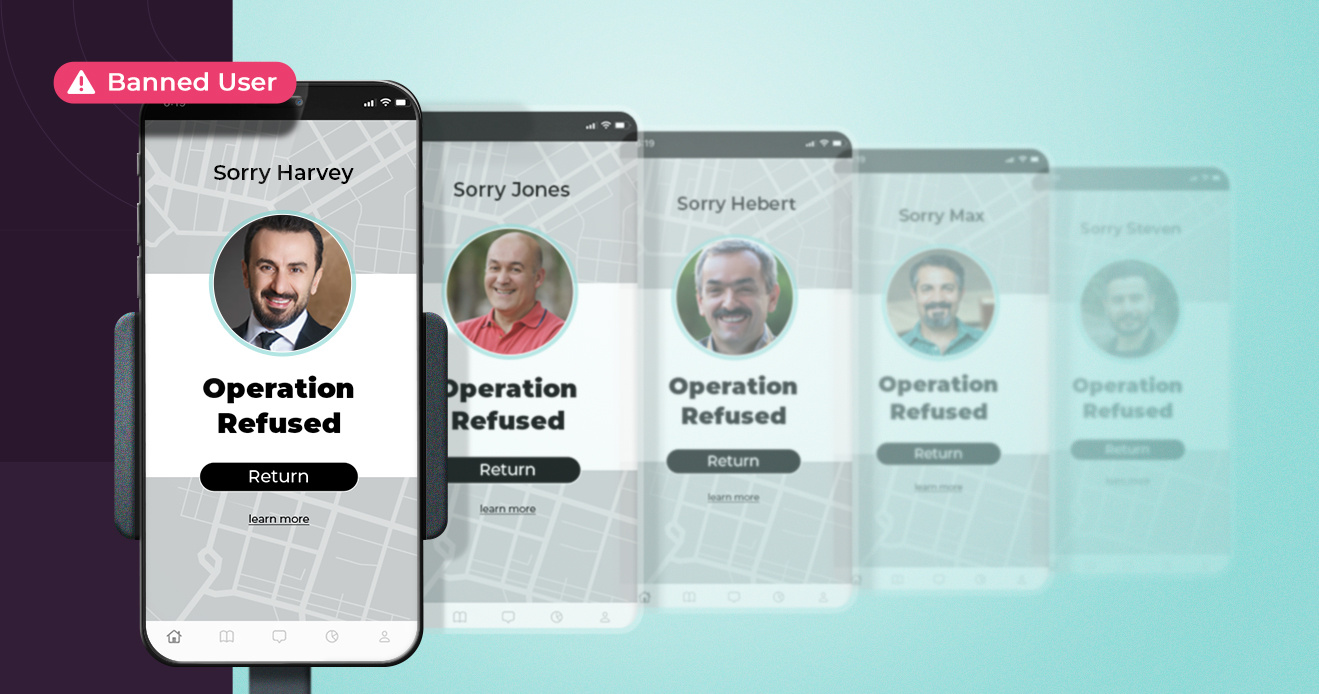- Blog
- How to choose the best identity verification software
How to choose the best identity verification software
In the ever-evolving landscape of digital security, businesses face numerous challenges in ensuring the authenticity of their users. From dealing with stolen or synthetic identities to managing false positives and minimizing user friction, identity verification software plays a vital role in safeguarding user data. But how effective are these systems? Can they be fortified for better performance?
Subscribe to the Incognia Newsletter
The Internet allows people from all over the world to connect with one another—dating, social media, banking, and more are all possible across massive distances. With the freedom to interact with anyone, however, also comes the danger that you could be talking to anyone, including fraudsters and criminals.
For stakeholders at digital companies like online financial institutions, social media platforms, P2P marketplaces, and so on, the anonymity presented by the Internet poses a significant Trust and Safety concern. If you can’t verify who your online banking customers are, for example, how can you know that their money isn’t the proceeds of criminal activity? If users on a P2P platform can’t be sure of who they’re talking to, how can they avoid being scammed or otherwise victimized by bad actors?
For these reasons, identity verification software is absolutely critical in bringing a higher standard of trust to these platforms. With that said, however, understanding and choosing an IDV solution from the numerous ones available is easier said than done.
What is identity verification software?
Identity verification software is a critical tool in the digital age that serves to confirm the authenticity of an individual's identity. It leverages sophisticated technology, such as biometrics and artificial intelligence, to analyze and verify personal information against various databases and records in real-time. This software is becoming increasingly important as businesses, governments, and organizations worldwide strive to combat identity theft, ensure security, and maintain compliance in a rapidly evolving digital landscape.
For banks and financial institutions, identity verification is a requirement by law under Know Your Customer (KYC) and anti-money laundering (AML) regulations. But even for platforms where money never changes hands, such as dating or social media platforms, verifying user identity can go a long way in ensuring trust and safety among users.
Benefits of using identity verification software
Like any software tool or solution, the return-on-investment of identity verification software must be carefully considered by stakeholders. What are the associated costs and risks of implementing IDV software? What does the platform stand to gain if the chosen software works well? For many companies, especially those in the financial sector, identity verification solutions are table stakes for compliance, but that doesn’t mean they can’t carry other benefits.
1. Fraud prevention
Fraudsters use a variety of different tools to make their money, but by far their most valuable asset is their anonymity. After all, it’s a lot harder to commit scams and other abuses with impunity when you have to do it with your real face and name attached. Because committing fraud under their real identities would make them much more likely to be caught and even prosecuted, most fraudsters might think twice about targeting a platform with identity verification in place.
The more stringent the IDV process, the stronger the dissuasion. Some threat actors will still try to find gaps in security using fake or stolen identity information, but IDV at the very least skews the average fraudster’s cost-benefit analysis too far into the red for the IDV client in question to be an attractive target.
2. Regulatory compliance
For many businesses, particularly in the financial sector, meeting regulatory compliance requirements is mandatory. Identity verification software aids in adhering to regulations such as KYC (Know Your Customer) and AML (Anti-Money Laundering). Complying closely with these regulations and maintaining a robust IDV stack can help reduce the risk of facilitating fraud, money laundering, and muling, as well as help protect the business from regulatory consequences like fines or other civil and legal penalties.
3. Improved user trust
While identity verification can sometimes introduce friction into the onboarding process, it also increases user trust both in other users and in the platform. It’s much easier to trust interactions held on a platform when you know that other users are who they say they are—for example, you might have an easier time trusting that someone selling you a bike on an online marketplace isn’t going to run off with your money if you know their real name and face.
Similarly, you might feel more comfortable joining a dating app if you know romance scammers aren’t able to lie about their names and faces on the same app. This level of trust can improve the user experience by removing some of the uncertainty of interacting with other people online, which in turn can encourage better retention rates and user satisfaction.
Key factors to consider when choosing identity verification software
The market has no shortage of options, and it’ll be up to every individual company’s needs and resources to determine the best choice. That said, there are some universal considerations to weigh when attending vendor meetings and deciding on a new implementation.
1. Accuracy
The software's ability to correctly verify identities is paramount—if the software can’t accurately verify identities, it becomes a liability instead of an asset. A lack of accuracy in IDV can lead to false positives, increasing customer frustration and causing churn, while false negatives might leave the company in hot water ethically and legally if threat actors are allowed to sign onto and use the platform under false or stolen information.
2. Speed
No one wants to sign up for a new online banking account only to hear it’ll be a week before they can actually use and transact with their new app or web service. The digital age also makes it incredibly easy for frustrated customers to take their business elsewhere with a few clicks of a mouse or taps of a finger. That means that the speed with which an IDV solution can verify identities is an important factor in reducing friction and improving customer experience.
3. Scalability
The chosen software should be able to scale with the growth of the business—otherwise, it could be a bottleneck waiting to happen. Dozens of error messages and loading screens would be a frustrating experience for any customer, not to mention the potential security risk posed by an overwhelmed verification solution.
4. Compliance
The software should help the organization maintain compliance with applicable laws and regulations such as KYC, and AML. As discussed above, these regulations carry heavy legal and ethical consequences if businesses fail to stay in compliance—anything from significant legal penalties to the enablement of financial crimes is possible if banking and other types of customer IDs can’t be accurately verified.
5. Integration
The software should easily integrate with existing systems and processes, ensuring a smooth transition and operation. How many employees will it take to implement the new solution? What is support like during the process? How long will it take before the solution is up and running, ready for use with real customers? These are all important questions that can have an impact on whether or not an IDV solution is right for a given client.
6. Cost
Finally, the cost of the software is a crucial factor. Stakeholders should consider both the upfront cost and the long-term value the software provides in terms of security, trust, and regulatory compliance.
Challenges facing effective identity verification
If identity verification were easy, everyone would do it—unfortunately, reliable IDV faces as many challenges as any other aspect of security and fraud prevention. These challenges are important to think about as decision makers navigate the market of solutions, as they represent challenges that each vendor will be grappling with in their own ways.
1. Synthetic or stolen identities
Stolen and synthetic identities pose a significant challenge for identity verification software. When it comes to stolen identities, the issue is straightforward: threat actors use information from real individuals—often obtained through illicit means—to impersonate them. This deception is difficult to detect as the details provided are legitimate, albeit misused.
On the other hand, synthetic identities are more complex. Here, fraudsters create new identities by combining real and fake information. For instance, they might use a real social security number with a fictitious name and address. Since some elements of this identity are authentic, less spoofing-resilient identity verification software might mistakenly approve it.
2. False positives & false negatives
False positives represent another significant challenge faced by identity verification software. In this scenario, a legitimate user is mistakenly flagged as fraudulent, causing unnecessary obstruction to their experience and potentially leading to loss of business. Over time, a high rate of false positives can degrade user trust and satisfaction, harming the platform's reputation and user retention rates.
Conversely, false negatives, where fraudulent attempts are incorrectly identified as legitimate, pose a serious security risk. These errors allow unauthorized users to gain access to sensitive areas or information, potentially leading to data breaches. They can also enable illegal activities such as money laundering or identity theft, putting the business at risk of regulatory non-compliances and associated legal penalties.
3. Increased user friction
User friction is a significant issue faced by identity verification software. A process that's too complex or time-consuming can deter potential users, causing them to abandon sign-up or transaction procedures mid-way. This friction often arises from multi-step verification processes that require users to provide an array of details or documents. While these measures ensure robust security, they may be inconvenient and intrusive from a user perspective. Furthermore, a high friction experience can lead to poor user satisfaction and a general aversion to the platform, resulting in lower conversion rates and user retention.
Using real-time address verification to strengthen identity verification
Redundancy is often the name of the game when it comes to fraud prevention and user security—the more layers of security a platform can muster, the lesser the chances of threat actors finding and slipping through enough cracks in the armor to cause real damage. When it comes to identity verification software, layering other identity signals alongside the primary software solution can help boost the resiliency of the IDV stack and minimize other problems like false positives and user frustration.
Real-time address verification is one such identity signal. Incognia’s research has shown that most users handle sensitive transactions like onboarding from what we call a “trusted location”—typically the user’s home or work. By verifying whether a user’s real-time address matches their reported address associated with their identity information, companies can have access to an enhanced layer of risk assessment.
As an example, verifying real-time addresses could help mitigate the effects of identity spoofing using stolen or synthetic credentials. If a threat actor supplies a different person’s address or a made up address, real-time address verification can identify and flag that that user isn’t anywhere near where they said they are, increasing the risk of their onboarding being fraudulent. Additionally, Incognia’s location technology can act with apartment-level accuracy, reducing the risk of false positives associated with the signal.
Location-based layers like Incognia’s solution can also help reduce user frustration by providing an option for lower-risk onboarders to go through an abbreviated process. If a user’s real-time address matches their reported address, platforms, depending on their risk appetite, can consider that a low-risk onboard and require less documentation from that user. In case the user fails a real-time address verification check, step-up authentication is always an option.
The challenges posed by identity verification are complex, ranging from dealing with synthetic or stolen identities to managing false positives and minimizing user friction. However, layering other identity signals like location alongside IDV software can help seal the gaps and bring a more airtight Trust & Safety shield to the table. Regardless of which vendor or combination of vendors a company chooses, a comprehensive and layered approach to identity verification is essential to secure user data and maintain trust in today's digital landscape.




